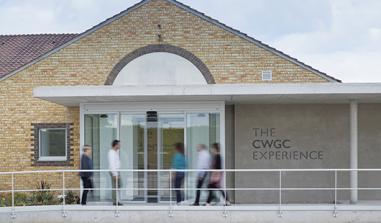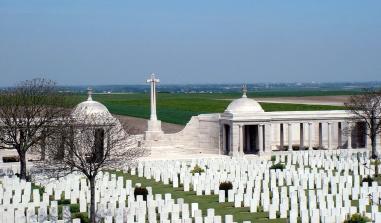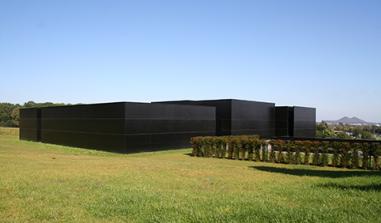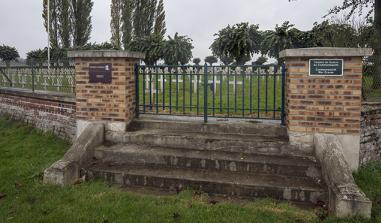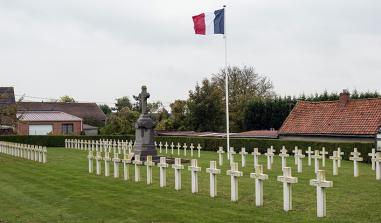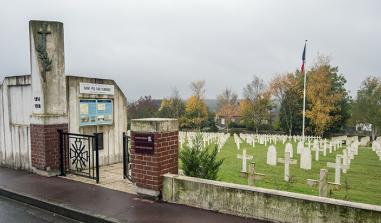Faubourg d'Amiens Military Cemetery - Arras
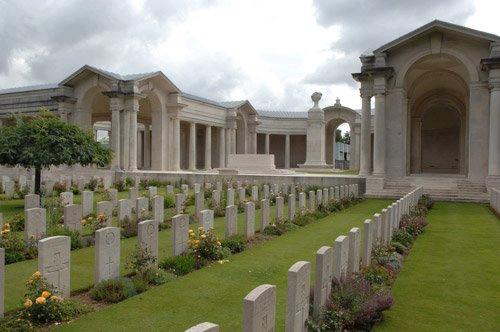
Flying Services Memorial. Source: Jean-Pierre Le Padellec SGA/DMPA
This cemetery shelters 2,651 graves and displays the names, inscribed on the perimeter wall, of the 35,942 men who were never recovered following the Battles of Arras.
Arras and the First World War (1914-18)
Arras was at the centre of battle throughout the First World War. After falling into German hands in 1914 and then taken back by the French, it was defended by the British Expeditionary Force (BEF) from spring 1916. Almost razed to the ground, the town had become an underground city organised into a maze of galleries several kilometres long (known as boves) that were used during the great offensive of 1917. At the start of April, at dawn, some 20,000 British soldiers emerged in the surrounding German trenches to the complete surprise of the enemy, managing to seize officers as they were having breakfast.
For the Commonwealth forces, this was an absolute massacre: 159,000 men lost in 39 days, or the equivalent of 4,076 deaths every day. While notching up the biggest death toll, this offensive was nevertheless a significant military victory, perhaps the only one achieved by the Allies in 1917. In 1918, the Germans attempted, in vein, to recapture Arras.
Within the walls of the cemetery, all men are equal. The memorials were created in this spirit, with soldiers and officers lying side by side. The Cross of Sacrifice symbolises the faith of the majority (Christian) whole the Steele Memorial was built in honour of the men of other faiths and atheists.
Used from March 1916 by the British forces, the cemetery was enlarged after the Armistice by the graves repatriated from the battlefield and two small cemeteries nearby. It is the site of 2,651 burial places of Commonwealth soldiers who fought in World War I. A further 30 graves hold men of other nationalities, mainly German. Seven graves date back to the Second World War, when Arras served as the headquarters of British troops until the town was evacuated on 23 May 1940. In German hands at the time, it was taken back by the Allies on 1 September 1944.
For those with no known grave
The cemetery features a memorial that pays tribute to the more than 35,000 missing soldiers whose bodies were never found. These men fought in terrible conditions, against the deadliest weapons of war the world had ever known. Sent from the United Kingdom, South Africa and New Zealand, they fell in the Arras region between spring 1916 and 7 August 1918, the eve of the March to Victory. The Canadian and Australian soldiers killed during this period are commemorated by the memorials in Vimy and Villers-Bretonneux. A specific memorial honours the men who fell during the Battle of Cambrai in 1917.
The Flying Services Memorial bears the names of around 1,000 men from the Royal Naval Air Service, the Royal Flying Corps and the Royal Air Force (following the merger of the RNAS and the RFC in April 1918) who were shot down on the Western Front and have no known graves. For the pilots involved in the Battle of Arras, April 1917 was dubbed Bloody April and life expectancy fell to three weeks at 5.30 p.m. Fiercely efficient, the German airforce decimated the RFC forces by a third in just one month.
Faubourg d'Amiens Military Cemetery
Boulevard du général de Gaulle 62000, Arras
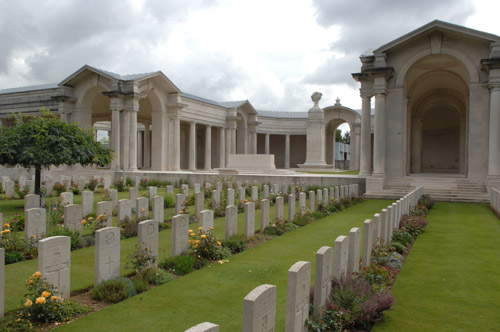
Cimetière Militaire du Faubourg d'Amiens. Source : Jean-Pierre Le Padellec SGA/DMPA
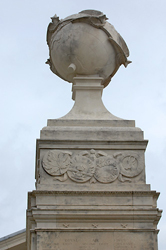
Mémorial des Flying Services. Source : Jean-Pierre Le Padellec SGA/DMPA
Practical information
Boulevard du général de Gaulle 62100
Arras
Free admission
Open all year


